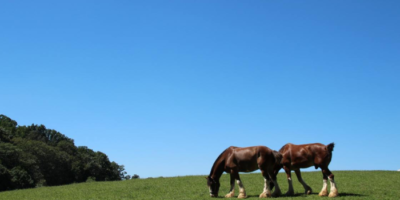Welcome to Pasquier Turf Blogspot, your ultimate guide to maintaining a healthy and vibrant lawn. A well-maintained lawn not only enhances the aesthetic appeal of your home but also provides a multitude of benefits. From improving air quality to reducing soil erosion, a healthy lawn is a valuable asset. In this blog article, we will explore various aspects of lawn care, including common problems and their solutions, choosing the right grass for your lawn, lawn care tips for different seasons, essential lawn care equipment, watering and irrigation techniques, and a comprehensive lawn maintenance schedule.
The Importance of a Healthy Lawn
A healthy lawn is more than just a beautiful sight. It plays a crucial role in the overall well-being of your surroundings. Firstly, a well-maintained lawn improves air quality by absorbing carbon dioxide and releasing oxygen. It acts as a natural filter, trapping dust and pollutants, leading to cleaner and fresher air.
Additionally, a healthy lawn helps in reducing soil erosion. The roots of the grass hold the soil together, preventing it from being washed away during heavy rains. This, in turn, helps in maintaining the stability of the ground. Moreover, a lush green lawn provides a safe and comfortable play area for children and pets. It offers a soft surface for playing and reduces the risk of injuries.
A healthy lawn also has a positive impact on the overall value of your property. A well-maintained lawn enhances the curb appeal of your home and creates a welcoming environment. It adds to the aesthetic beauty of your surroundings and makes your property stand out. Whether you are planning to sell your house or simply want to enjoy a beautiful outdoor space, a healthy lawn is a valuable asset.
Common Lawn Problems and How to Solve Them
Even the most well-maintained lawns can face certain issues. However, with proper knowledge and timely action, these problems can be easily resolved. One common issue is the presence of weeds. Weeds compete with grass for nutrients and water, leading to a patchy and unhealthy lawn. To combat this problem, it is essential to regularly remove weeds manually or use herbicides.
Another common problem is the appearance of brown patches on the lawn. This can be caused by various factors, such as over or under-watering, fungal infections, or compacted soil. Identifying the root cause and taking appropriate measures, such as adjusting watering schedules or aerating the soil, can help in solving this problem.
Insects and pests can also cause damage to your lawn. Grubs, chinch bugs, and armyworms are some of the common pests that feed on grass roots, leading to brown and dead patches. Applying insecticides and adopting preventive measures, such as regular mowing and proper watering, can help in controlling these pests. Furthermore, improper mowing techniques, such as cutting the grass too short, can weaken the lawn and make it susceptible to diseases and pests. Regular mowing at the appropriate height and frequency is essential for maintaining a healthy lawn.
Choosing the Right Grass for Your Lawn
Choosing the right type of grass for your lawn is crucial for its long-term health and appearance. The choice of grass depends on various factors, such as climate, soil type, and the amount of sunlight the lawn receives. Cool-season grasses, such as Kentucky bluegrass and tall fescue, are suitable for regions with cold winters and hot summers.
These grasses are known for their ability to withstand temperature extremes and require moderate maintenance. On the other hand, warm-season grasses, such as Bermuda grass and Zoysia grass, thrive in regions with hot and humid summers. These grasses are more drought-tolerant and require less water compared to cool-season grasses.
It is also important to consider the shade tolerance of the grass when choosing the right type for your lawn. Some grasses, like fine fescue, are more shade-tolerant and can thrive in areas with limited sunlight. Additionally, the texture and color of the grass should be taken into account.
Fine-textured grasses, such as Bermuda grass, provide a more manicured appearance, while coarse-textured grasses, such as St. Augustine grass, have a more rugged look. Considering all these factors and consulting with a local expert can help you make an informed decision and choose the right grass for your lawn.
Lawn Care Tips for Different Seasons
Proper lawn care varies depending on the season. Each season brings its own challenges and requirements for maintaining a healthy lawn. In spring, it is important to focus on fertilization and weed control.
Applying a balanced fertilizer and pre-emergent herbicides can help in promoting healthy growth and preventing weed infestation. Spring is also a good time to aerate the soil and oversee any thin or bare patches. This will aid in improving soil structure and promoting new grass growth.
As summer approaches, proper watering becomes crucial. Deep and infrequent watering is recommended to encourage deep root growth and drought tolerance. Early morning or late evening is the best time to water the lawn, as it minimizes water loss due to evaporation.
Regular mowing is also essential during summer, but it is important to adjust the mowing height to avoid stress on the grass. Additionally, keeping an eye out for pests and diseases and taking timely action is important to prevent any damage.
In autumn, it is time to prepare the lawn for the upcoming winter. Raking fallen leaves and removing debris is essential to prevent disease and promote air circulation. This is also a good time to fertilize the lawn with a high-phosphorus fertilizer to promote root growth. Overseeding can also be done during this season to fill in any thin areas. Before the onset of winter, it is crucial to mow the grass at a slightly lower height to prevent snow mold and other winter-related issues.
Winter is a time when the lawn goes dormant, but some maintenance is still required. It is important to keep the lawn free of debris and avoid excessive foot traffic, as it can cause damage to the grass.
Additionally, removing snow from the lawn to prevent ice formation is important. Overall, adapting the lawn care routine according to the changing seasons is essential for maintaining a healthy and vibrant lawn throughout the year.
Essential Lawn Care Equipment
Having the right lawn care equipment is essential for efficient and effective maintenance. One of the most basic and important tools is a lawn mower. There are various types of lawnmowers available, such as push mowers, self-propelled mowers, and riding mowers.
The choice of mower depends on the size of your lawn and personal preference. Other essential tools include a string trimmer for edging and trimming grass around obstacles, a leaf blower for removing debris, and a rake for leveling soil and removing thatch.
In addition to these tools, it is important to have a good quality sprinkler system for efficient watering. There are various types of sprinklers available, such as oscillating sprinklers, impact sprinklers, and underground sprinkler systems.
The choice of sprinkler depends on the size and shape of your lawn, as well as your watering needs. Additionally, having a soil testing kit is beneficial for determining the pH and nutrient levels of the soil, helping you make informed decisions regarding fertilization and soil amendments.
Watering and Irrigation Techniques
Proper watering is essential for maintaining a healthy lawn. Overwatering or underwatering can lead to various problems, such as shallow root growth, disease susceptibility, and weed infestation. The key is to water deeply and infrequently, allowing the water to penetrate the soil and reach the roots.
An inch of water per week is generally recommended, but this can vary depending on the grass type and climate. It is important to water in the early morning or late evening to minimize water loss due to evaporation.
Using the right irrigation techniques can also help in conserving water and promoting healthy growth. Drip irrigation is an efficient method that delivers water directly to the root zone, minimizing water wastage.
Installing a rain sensor or a smart irrigation controller can also help in adjusting watering schedules based on weather conditions. Additionally, proper maintenance of the sprinkler system, such as checking for leaks and adjusting the sprinkler heads, is important for optimal water distribution.
Lawn Maintenance Schedule
Creating a comprehensive lawn maintenance schedule is essential for keeping track of various tasks and ensuring timely action. A well-maintained lawn requires regular care throughout the year. This includes tasks such as mowing, fertilizing, aerating, overseeding, and pest control.
Each task has its own frequency and timing, which may vary depending on the grass type and climate. A lawn maintenance schedule helps in organizing these tasks and ensures that nothing is overlooked.
Spring is the time for fertilization, weed control, and aeration. Summer requires proper watering, mowing, and pest control. Autumn is the season for removing debris, overseeding, and fertilizing. Winter involves minimal maintenance, but it is important to keep the lawn free of debris and prevent ice formation.
Regular monitoring of the lawn for pests, diseases, and other issues is important throughout the year. Creating a customized maintenance schedule based on your lawn’s needs and following it diligently will help in maintaining a healthy and beautiful lawn.
Conclusion and Final Thoughts
Maintaining a healthy and vibrant lawn requires knowledge, effort, and proper care. From choosing the right grass to implementing the right lawn care techniques, each step plays a crucial role in the overall well-being of your lawn.
By understanding the importance of a healthy lawn, identifying and solving common problems, choosing the right grass, following seasonal lawn care tips, having the essential equipment, implementing proper watering techniques, and creating a comprehensive maintenance schedule, you can achieve a lush and beautiful lawn that will be the envy of the neighborhood.
Remember, a healthy lawn not only enhances the beauty of your surroundings but also provides numerous benefits for you and the environment. So, let’s embark on this journey of creating and maintaining a stunning lawn together!





















Comments